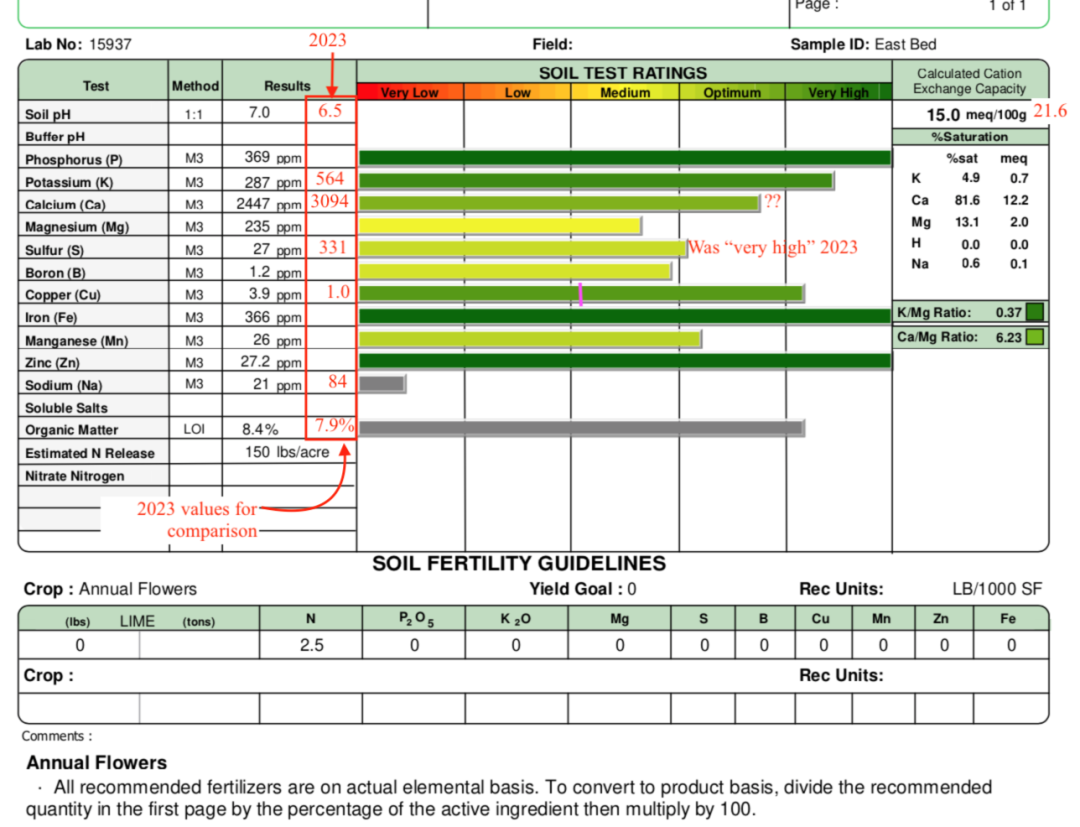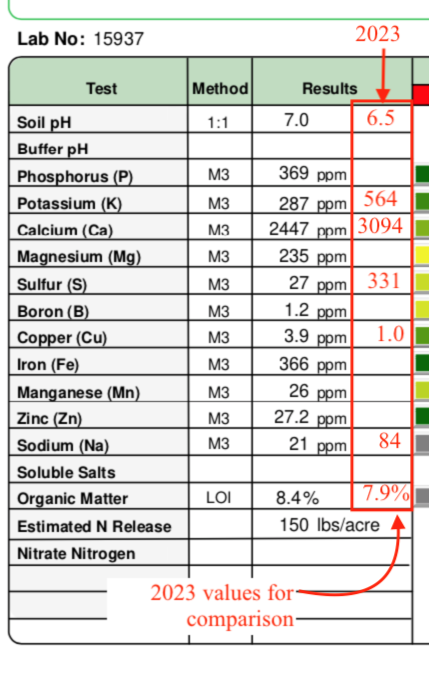OK here are the results of my 2024 soil test. I added the numbers from last year's test where they differed significantly.
I'm disappointed that the pH has gone from 6.5 to 7.0. Anyone have ideas about that?
Last year, I had brand new soil that was high in almost everything. It was suggested that I test again after the season to see how things settled out. As advised, I did not add anything to the soil, but did do some foliar feeding from time to time, so I imagine that gets in there. I know one of them was a calcium supplement, but that value has gone down.
My plants did well in this soil last year. There were a few that were excessively bushy--too much foliage and very very few blooms. I wondered if there was some pocket of high nitrogen soil in that area. They were all together in a group--about 5 plants that had given me tons of flowers the previous year were gigantic leafy overgrown, and gave just a couple of blooms, if that.
Anyway, there's not a lot of time to make adjustments, but I would welcome any suggestions!
Thanks!!


